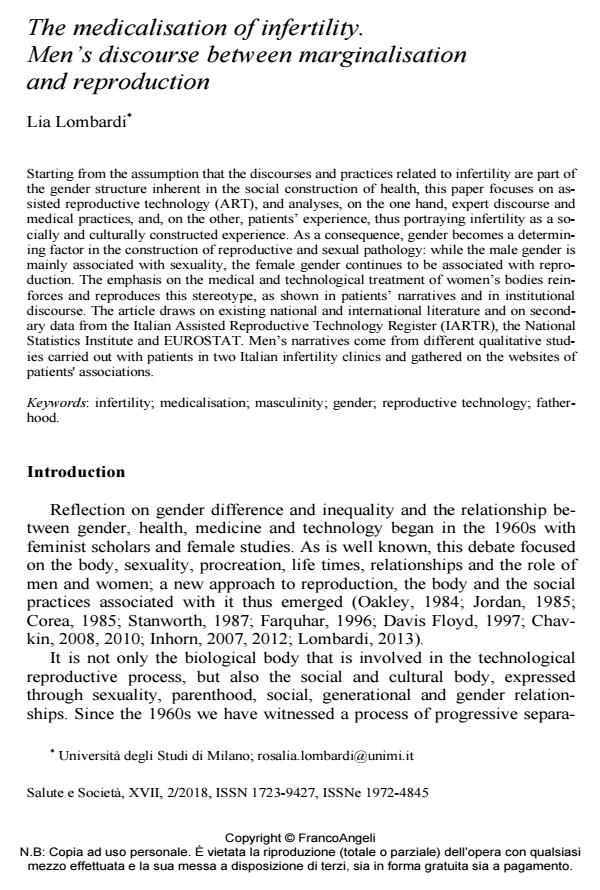The medicalisation of infertility. Men’s discourse between marginalisation and reproduction
Titolo Rivista SALUTE E SOCIETÀ
Autori/Curatori Lia Lombardi
Anno di pubblicazione 2018 Fascicolo 2018/2
Lingua Inglese Numero pagine 16 P. 56-71 Dimensione file 93 KB
DOI 10.3280/SES2018-002005
Il DOI è il codice a barre della proprietà intellettuale: per saperne di più
clicca qui
Qui sotto puoi vedere in anteprima la prima pagina di questo articolo.
Se questo articolo ti interessa, lo puoi acquistare (e scaricare in formato pdf) seguendo le facili indicazioni per acquistare il download credit. Acquista Download Credits per scaricare questo Articolo in formato PDF

FrancoAngeli è membro della Publishers International Linking Association, Inc (PILA)associazione indipendente e non profit per facilitare (attraverso i servizi tecnologici implementati da CrossRef.org) l’accesso degli studiosi ai contenuti digitali nelle pubblicazioni professionali e scientifiche
Starting from the assumption that the discourses and practices related to infertility are part of the gender structure inherent in the social construction of health, this paper focuses on assisted reproductive technology (ART), and analyses, on the one hand, expert discourse and medical practices, and, on the other, patients’ experience, thus portraying infertility as a socially and culturally constructed experience. As a consequence, gender becomes a determining factor in the construction of reproductive and sexual pathology: while the male gender is mainly associated with sexuality, the female gender continues to be associated with reproduction. The emphasis on the medical and technological treatment of women’s bodies reinforces and reproduces this stereotype, as shown in patients’ narratives and in institutional discourse. The article draws on existing national and international literature and on secondary data from the Italian Assisted Reproductive Technology Register (IARTR), the National Statistics Institute and EUROSTAT. Men’s narratives come from different qualitative studies carried out with patients in two Italian infertility clinics and gathered on the websites of patients' associations.
Parole chiave:infertility; medicalisation; masculinity; gender; reproductive technology; father-hood
Lia Lombardi, The medicalisation of infertility. Men’s discourse between marginalisation and reproduction in "SALUTE E SOCIETÀ" 2/2018, pp 56-71, DOI: 10.3280/SES2018-002005